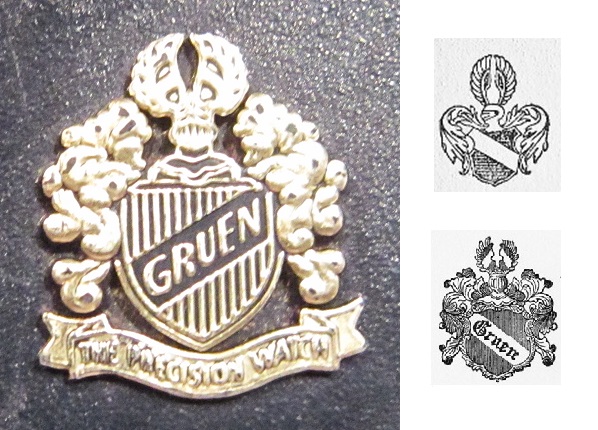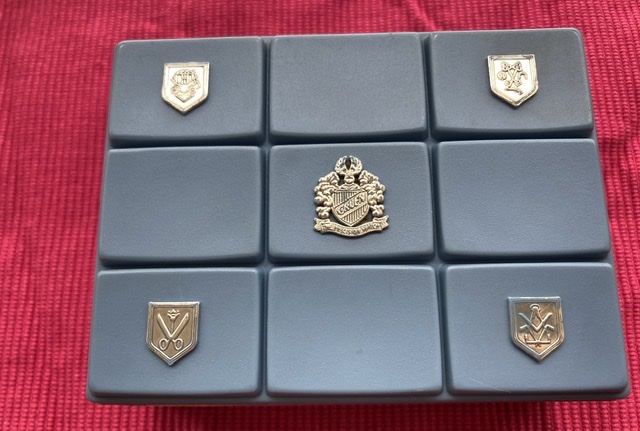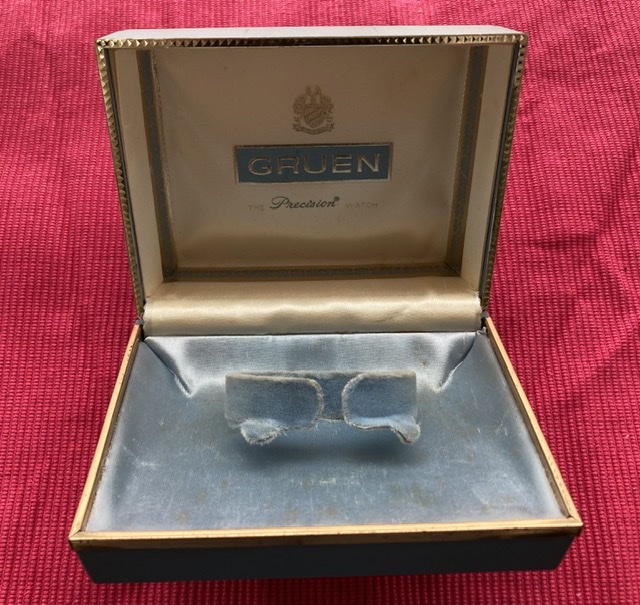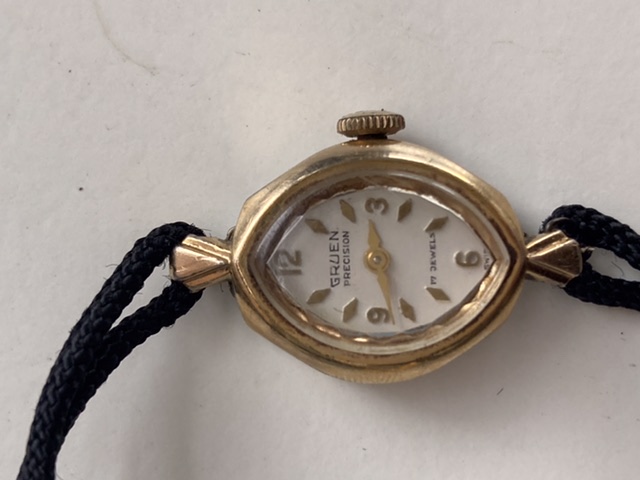|
|
| Re: Blue angular crest box [message #14520 is a reply to message #14519] |
Sun, 14 February 2021 21:51   |
 |
 Jenneke
Jenneke
Messages: 2053
Registered: May 2013
Location: Netherlands
|
Gruen Authority |
|
|
Meaning of the silver pictures on top. (Repeated from my 2013 contest item)
Gruen Coat of arms
The coat of arms is an artistic work on a medieval knight's armor for identification. People in medieval middle ages used these shields to express their identity and status (nobility) in society. Each item in the design had a meaning. Looking at the Gruen Coat of arms:
- The shield with a (sinister) bend on the field.
- The helmet full faced with bars has a royal status.
- The crest above the helmet two bird's (eagle?) wings. Maybe a link to Albrecht Durer.
- The mantle or manting - draped cloth next to the shield.
- Name design banner below the shield.
You can see this Gruen coat of arms on the outside of the Time Hill building, as their Service label, in advertisements and plenty in their Guild books.
The first time it appears is in the 1918 Guild book, followed by an 1919 advertisement in The Saturday Evening Post ("The American Service Plant behind Gruen Watches"). These coats of arms had an empty bar inside the shield. From 1920 the bend contained the word Service. The name design below the coat of arms changed over the years. First only "Gruen" appeared below the shield, around 1926 "Gruen watches", in 1933 "Gruen guild watches". Around 1935 they redesigned again, precision was the new word that appeared inside the bend. From 1940 the coats of arms disappeared rapidly.

Medieval Guild Signs
In 1917 Gruen started their Guild theme "A worthy company of watchmakers", the Gruen watchmakers Guild. They introduced the spirit of the medieval guilds, in particul the watchmaking guild. The guild is a craftsmen in a particular trade and tried to attempt to guarantee standards amongst crafts in Medieval times. Hanging over many old narrow cobblestone streets of mostly German-speaking regions of Europe, guild signs or emblems (zunftzeichen) show the medieval tradition.

1 - This signs shows a conveyance coach. It the guild period it marked a mode of transport or signifies a post house for a night's stay or longer. This could be a hint to their "Guild's advance manufacturing policy: Gruen is the only American concern with factories on both sides of the Atlantic...".
2 The sign has two crossed keys, a cogwheel, a pistol and a chimney sweep tool. These stood for a locksmith. In the 1929 Guild book on page 152 is mentioned: "in olden days when locksmiths mended watches", where the maintenance service is described.
3 This sign contains a scissor and a thing that probably is a round head pin. This sign was used by tailors. Don't know what this has to do with Gruen, except the box has a fabric lining.
4 Most famous sign from medieval times is the carpentry sign. It shows a Masonic square, compass, saw and axes. Link to first wooden boxes?
Frederick G. Gruen.
Frederick Gruen (1872-1945) was a freemason. Member of Hanselmann Lodge No. 208, Cincinnati, Ohio. This lodge was founded in 1851 and had mostly German members. Until 1914 it was situated in the Germania building (1127 walnut street Cincinnati). The masonic temple is on the 3101 Clifton Avenue (building now part of the hebrew union college)
You can only waste time if you forget to enjoy it - Loesje
[Updated on: Sun, 14 February 2021 22:45] Report message to a moderator |
|
|
|
| Re: Blue angular crest box [message #14521 is a reply to message #14520] |
Sun, 14 February 2021 21:54  |
 |
 Jenneke
Jenneke
Messages: 2053
Registered: May 2013
Location: Netherlands
|
Gruen Authority |
|
|
And the box has a ladies version. Baby blue. Difficult to get the correct color, but I would say html code lightblue.


And the watch that came with it.

You can only waste time if you forget to enjoy it - Loesje
[Updated on: Wed, 17 February 2021 14:27] Report message to a moderator |
|
|
|
 Vintage Gruen
Vintage Gruen